
In a market that rewards financial agility, you might be eager to adopt cash management tools that help you:
- Exercise tighter oversight.
- Obtain better forecasting indicators
- Avoid liquidity risks.
After all, effective cash management is the foundation of your business’s financial health. It gives your organization a systematic way to monitor cash in and out.
With all of that in mind, it’s no surprise that choosing the right cash management software is a critical decision you won’t make lightly.
This article will review seven of the best cash management tools available today, focusing on key features, benefits, pricing, and why we selected them. We’ll cover what each tool does well (and where it has limitations) so you can decide which solution fits your needs.
We’ve picked these tools based on real-time visibility, ease of use, robust forecasting capabilities, and value for money.
7 Top Cash Management Tools
Here are seven of the best cash management tools to choose from. We’ve included the features, benefits and limitations, pricing, and who each tool is best for to give you the most comprehensive look at what they bring.
NetSuite Cash Management: Best for companies using NetSuite ERP that want automated cash tracking and reconciliation across multiple accounts.
Datarails Cash: Best for finance teams that need real-time, drill-down visibility into cash positions across multiple bank accounts and Excel integration.
HighRadius: Best for mid-to-large businesses seeking AI-powered cash flow forecasting and automated transaction reconciliation.
Kyriba: Best for large enterprises and multinational corporations managing complex global cash, payments, and FX exposure.
Float: Best for small to midsize businesses that want easy, scenario-based cash forecasting with QuickBooks or Xero integration.
Rho: Best for mid-market companies looking for an all-in-one treasury, AP, and cash investment platform with banking features.
SAP S/4HANA Cloud for Cash Management: Best for large enterprises already using SAP that need centralized, integrated cash and liquidity planning.
7 Top Cash Management Tools
Here are seven of the best cash management tools to choose from.
1. Datarails Cash

Features
Datarails’ cash management tool provides a real-time view of cash positions across multiple bank accounts.
Datarails Cash serves as a bridge, connecting to multiple banking platforms and automating cash reporting, positioning, and forecasting while eliminating manual reconciliation. With it, businesses can see their full cash position in real time and at a glance.
This single-source approach allows finance teams to analyze cash more streamlined, with Datarails providing immediate, drill-down capabilities that help peel back the data layers.
Datarails provides clients with a full suite of cash flow management and visualization tools, including:
- Cash flow forecasting.
- Vendor management insights.
- Real-time data visualization.
Each feature complements the others to deliver more cash control and visibility, helping you make better-informed decisions to support cash stability and growth.
This facilitates more proactive financial management by uncovering trends, patterns, and cash flow dynamics that might otherwise be missed.
Datarails Cash integrates a company’s bank accounts and other financial data feeds into a single platform. This effectively helps you sidestep the challenges of dealing with multiple banking systems.
The real-time visibility of cash directly enables finance teams to quantify positions by type, currency, and entity, leading to informed decisions and quick reactions to changing cash flows.
Consider Datarails Cash a centralized platform for maintaining a healthy cash flow position and accurately determining liquidity needs.
Benefits:
- User-friendly.
- Direct integration with Excel.
- Automates the compilation of data from various accounts into accurate, time-efficient reports.
Limitations:
- No free trial.
Pricing
- Pricing is not publicly disclosed. Interested users can contact Datarails for a customized quote based on company size and needs.
Best for
- Finance teams seeking an all-in-one cash management platform that connects directly to banks and Excel, offering strong visibility, automation, and forecasting tools.
Ratings:
- Capterra: 4.8/5 (97 reviews)
- G2: 4.6/5 (182 reviews)
2. Highradius

Features
HighRadius is a cash management solution that centralizes cash flows for mid to large-sized businesses. Like most of these tools, it allows users to see and manage their cash in real time from a single platform across multiple bank accounts and ERP systems.
With real-time monitoring and visibility over cash positions across different locations, businesses can make better and smarter financial decisions.
The platform automates the most critical elements of cash management—transaction tagging and bank reconciliation—to reduce manual effort and increase data accuracy.
It provides highly detailed dashboards on cash flow by company, currency, and location, supporting improved planning and cash flow forecasting.
Benefits:
- Uses AI to predict cash flows more accurately.
- Helps monitor cash positions in real time with frequent data feeds.
Limitations:
- Less suitable for personal finance or users outside the treasury function.
- Some users report that customer service is lacking.
Pricing
- Pricing is not publicly listed. Interested businesses must contact HighRadius for a tailored quote based on organizational size and requirements.
Best for
- Mid-size to enterprise-level organizations looking for AI-driven cash forecasting and treasury-focused cash visibility across multiple accounts and entities.
Ratings:
- Capterra: 4.4/5 (10+ reviews)
- G2: 4.3/5 (212 reviews)
3. Kyriba
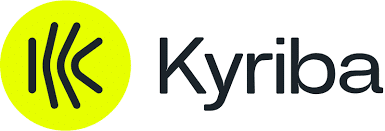
Features
Kyriba targets firms with sophisticated cash and risk management needs. It provides global cash visibility, liquidity management, and FX exposure monitoring. Kyriba automates payments, cash, and liquidity across global entities.
Large enterprises and multinational corporations with complex cash-flow requirements use the platform because of its multidimensional risk and cash-position management approach.
Benefits:
- Best suited for large organizations with complex financial needs.
- Offers powerful financial analysis tools.
- Includes long-term support for implementation and ongoing use.
Limitations:
- Implementation can be time-consuming and resource-intensive.
- Users report a steep learning curve
Pricing
- Pricing is not publicly available. Interested organizations should contact Kyriba for a quote based on business complexity and scale.
Best for
- Large enterprises and multinational corporations requiring advanced treasury, FX, and liquidity management across multiple entities and currencies.
Ratings:
- Capterra: 4.3/5 (7 reviews)
- G2: 4.5/5 (81 reviews)
4. Float
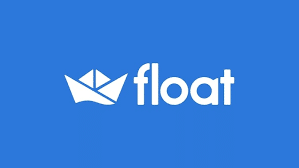
Features
Float is a cash flow management platform designed for small and medium businesses that prefer the simplicity and usability of a straightforward budget and forecast approach.
It allows users to easily create and adjust budgets, testing different scenarios such as cost increases or new hires. Float integrates with accounting platforms like QuickBooks and Xero to automatically update forecasts using real-time data.
Float offers a dynamic picture of cash movement, making it especially well-suited to business owners who want clear insights without unnecessary complexity.
Benefits:
- Clear, easy-to-use interface.
- Suitable for growing teams.
Limitations:
- Cost can be a limiting factor for small businesses.
- Some users want more customization of the templates, including forecasts extending beyond three years.
Pricing
- Float offers tiered pricing based on business size and needs, starting at approximately $50/month. Exact pricing depends on features and integration requirements.
Best for
- Small to midsize businesses that require a straightforward and intuitive cash flow forecasting tool with real-time accounting integration.
Ratings:
- Capterra: 4.6/5 (67 reviews)
- G2: 4.4/5 (44 reviews)
5. Rho
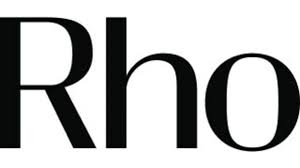
Features
Rho is a tool for finance teams that enables businesses to profitably manage accounts payable and treasury with automated accounts payable and treasury management.
It enables users to generate returns on excess cash while maintaining liquidity and security, and provides a comprehensive financial solution in one place.
Rho automates cash management for companies by providing FDIC-insured checking accounts and treasury investment options for their operating, excess, and surplus cash.
Companies can invest what they don’t need for day-to-day operations in short-term US government securities like US Treasuries. Portfolio policies can also be set to match a company’s liquidity and risk preferences.
Benefits:
- Users are impressed with its expense management features and ease of use.
- End-to-end platform includes treasury management, accounts payable, expense management, and corporate cards.
Limitations:
- Users note difficulties with its receipt management features.
- Several users also note a poor notification system.
Pricing
- Rho offers free business banking services, but some treasury services and investment features may involve fees based on usage or volume. Custom pricing is available.
Best for
- Mid-market companies seeking an all-in-one financial platform with treasury functionality, integrated spend control, and cash investment options.
Ratings:
- Capterra: 5/5 (1 review)
- G2: 4.8/5 (113 reviews)
6. SAP S/4HANA Cloud for Cash Management
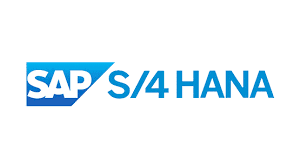
Features
SAP S/4HANA Cloud for cash management ensures up-to-date centralized views of cash positions and cash flows across a business, leading to optimal liquidity management and better financial decisions.
Its features include bank account management, cash flow forecasting, and liquidity planning. The system aggregates and consolidates data from multiple sources to give finance teams a single, accurate version of the financial truth.
Benefits:
- Cloud-based solution with robust features.
- Offers strong integration for cash visibility and liquidity planning.
- Supports large-scale data consolidation.
Limitations:
- Cost and complexity are two of the most commonly noted cons.
- Less valuable if your team doesn’t already use the SAP ecosystem.
Pricing
- Pricing is available upon request and varies significantly based on the size and setup of the business. SAP typically charges based on user count, usage volume, and modules selected.
Best for
- Enterprise-level businesses that already use SAP and need full-featured cash management integrated with their existing systems.
Ratings:
- Capterra: 4.4/5 (349 reviews)
- G2: 4.5/5 (732 reviews)
7. NetSuite
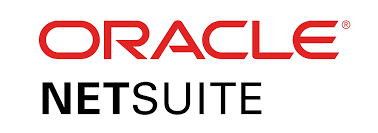
Features
NetSuite Cash Management is a powerful cash management solution that provides visibility into all bank and credit card data. It does so by automating data imports and reconciliations.
It can reduce the time finance teams spend on administrative tasks, allowing them to focus on generating insights and making decisions.
The solution integrates with thousands of banks so that automatic imports can give you a timely view of cash availability.
Benefits:
- Offers a broad set of features for diverse finance teams.
- Automates bank feeds and reconciliation.
- Supports scalability across departments and locations.
Limitations:
- Steep learning curve for new users.
- Limited customization and reported usability issues.
- Some missing features depending on business needs.
Pricing
- NetSuite does not publish pricing. Subscriptions are typically based on company size, selected modules, and user count. Custom quotes are available through NetSuite or authorized resellers.
Best for
- Growing businesses and enterprise teams in need of automated cash tracking across multiple accounts and departments, especially those already using NetSuite ERP.
Ratings:
- Capterra: 4.2/5 (1600+ reviews)
- G2: 4.0/5 (3,500+ reviews)
Why are Cash Management Tools Important?
Cash management tools help ensure you have liquidity available to meet unexpected expenses and cover day-to-day operational needs.
Increased transparency and better cash-flow organization can optimize resource allocation, prevent cash-flow bottlenecks, and ensure your operations run smoothly during crucial moments.
This, in turn, increases the likelihood of financial agility, allowing you to act quickly and adapt your plans in response to new opportunities or threats.
How Can You Improve Cash Flow Forecasting for Better Planning?
These cash management tools help by forecasting when cash will come in and when it will go out. With them, finance teams have the key indicators they need to plan for cash needs over time.
Accurate and granular cash projections enable organizations to prepare for periods with high and low cash flow. This lets companies confidently plan for upcoming payroll, vendor payments, and capital expenditures.
Streamlining Data Consolidation for Clearer Insights
Cash management tools can centralize data from multiple sources into one view, so finance teams do not need to spend countless hours manually collating and reconciling data for reporting purposes.
Instead, the cash flow, forecast, and transaction data are all in a single source of truth, accessible in a centralized system.
This gives the finance team a real-time view of the company’s financial position. With this view, they can make decisions faster and with confidence.
Building a Strong Financial Foundation
In short, cash management tools provide a framework for clarifying, structuring, and strategically understanding companies’ cash requirements.
They benefit cash management on a day-to-day basis but also inform long-term cash planning, strengthening a company’s cash flow and providing a solid foundation for continued growth.
Once the right tool is in place, a company can better position its finances for sustainable success.
Conclusion: What Are the Must-Have Features in a Cash Management Tool?
The “must-have” features in any financial tool will vary a bit depending on your specific organization. However, the ones we’ve covered in this article that most tools offer (including automated reconciliation) tend to be valuable to virtually any organization.
Explore each of these tools to get an idea of exactly how it will fit with your business and if it offers what you need.
Request a Datarails demo today to try the best cash management tool for yourself.